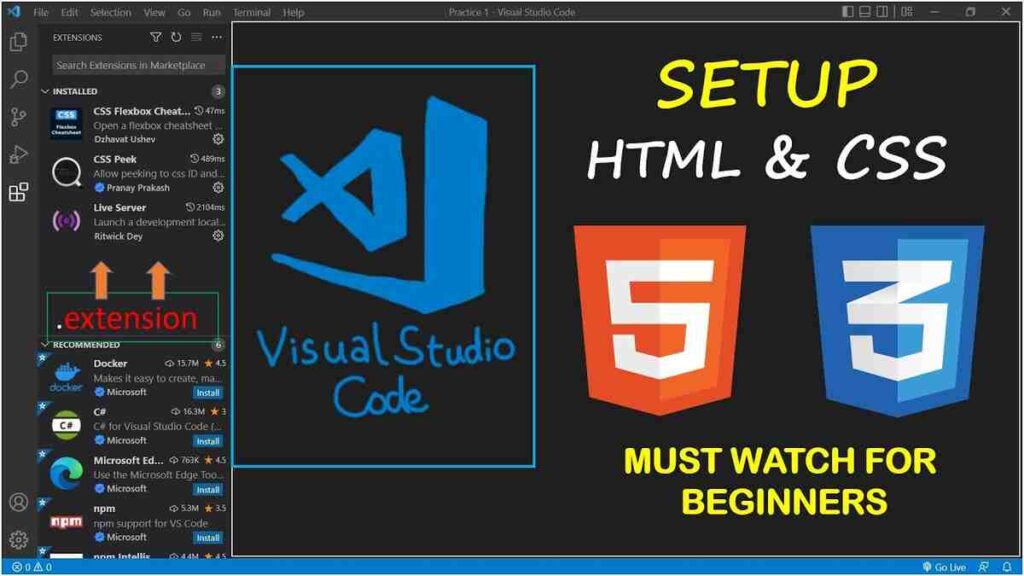Basic HTML Website Design: The Easy Way Start Learning HTML
Basic HTML Website Design

Basic HTML Website Design The process of designing a basic HTML website is a fundamental skill in web development. Whether you are a beginner or someone who wants to refine your website design skills, mastering the basics of HTML is the foundation upon which you build your online presence. This comprehensive guide will walk you through the essential steps to create a basic HTML website, highlighting key aspects to consider at each stage of the development process.
Understanding HTML Structure
A basic HTML website consists of a series of elements that define the structure and content of the webpage. Basic HTML Website Design paragraph s, links, images, and more. Understanding the syntax and structure of HTML is crucial for designing a website that is both functional and visually appealing.
Essential HTML Tags
<html>: This tag represents the root of an HTML document and should encompass all other elements.<head>: Located within the<html>tag, the<head>tag contains meta-information about the document, including the title and links to scripts and stylesheets.<title>: This tag defines the title of the webpage, which appears in the browser tab and is crucial for SEO.<body>: The<body>tag contains the content that is displayed on the webpage, including text, images, and other media.<h1>to<h6>: These tags define headings, with<h1>being the highest level and<h6>the lowest. Headings help structure the content and improve readability.
Creating a Basic Webpage Layout Basic HTML Website Design

The layout of a website plays a significant role in the user experience. Internet Marketing Service A well-structured layout guides users through the content and makes navigation intuitive. Below is a simple example of how to structure a basic HTML webpage:
<!DOCTYPE html>
<html lang="en">
<head>
<meta charset="UTF-8">
<meta name="viewport" content="width=device-width, initial-scale=1.0">
<title>Basic HTML Website</title>
</head>
<body>
<header>
<h1>Welcome to My Website</h1>
</header>
<nav>
<ul>
<li><a href="#home">Home</a></li>
<li><a href="#about">About</a></li>
<li><a href="#contact">Contact</a></li>
</ul>
</nav>
<main>
<section id="home">
<h2>Home</h2>
<p>This is the home section of the website.</p>
</section>
<section id="about">
<h2>About</h2>
<p>Learn more about us in this section.</p>
</section>
<section id="contact">
<h2>Contact</h2>
<p>Get in touch with us through this section.</p>
</section>
</main>
<footer>
<p>© 2024 My Website. All rights reserved.</p>
</footer>
</body>
</html>
Styling with CSS

While HTML provides the structure of a website, CSS (Cascading Style Sheets) is used to style the appearance. CSS allows you to apply colors, fonts, layouts, and more to your HTML elements.
body {
font-family: Arial, sans-serif;
margin: 0;
padding: 0;
}
header, nav, main, footer {
padding: 20px;
}
header {
background-color: #f0f0f0;
text-align: center;
}
nav ul {
list-style-type: none;
padding: 0;
}
nav ul li {
display: inline;
margin-right: 10px;
}
main {
background-color: #ffffff;
}
footer {
background-color: #f0f0f0;
text-align: center;
}
Incorporating Multimedia Basic HTML Website Design

A basic HTML website can be enhanced by incorporating multimedia elements such as images and videos. The <img> tag is used to embed images, while the <video> tag is used for videos. Including these elements can make your website more engaging and informative.
Adding Images and Videos
<section>
<h2>Gallery</h2>
<img src="image1.jpg" alt="Image 1" width="300" height="200">
<img src="image2.jpg" alt="Image 2" width="300" height="200">
</section>
<section>
<h2>Watch Our Video</h2>
<video width="320" height="240" controls>
<source src="movie.mp4" type="video/mp4">
Your browser does not support the video tag.
</video>
</section>
Ensuring Mobile Responsiveness
In the modern era, it’s crucial to ensure that your website is mobile-responsive. This means that the website should look and function well on a variety of devices, including smartphones and tablets. Using responsive design techniques, such as media queries and flexible layouts, you can create a website that adapts to different screen sizes.
Media Queries Example Basic HTML Website Design
Optimizing for SEO

To improve the visibility of your website on search engines, it’s essential to optimize your HTML and content for SEO (Search Engine Optimization). This includes using relevant keywords, optimizing meta tags, and ensuring that your website is fast and user-friendly.
SEO Best Practices Basic HTML Website Design
- Use descriptive and keyword-rich titles and headings.
- Include meta descriptions that summarize the content of each page.
- Ensure that your website loads quickly by minimizing code and optimizing images.
Conclusion
Creating a basic HTML website is the first step in establishing your online presence. By following the guidelines outlined in this article, you can design a website that is not only visually appealing but also optimized for search engines and user-friendly.
Learn More: Without Investment Ideas

